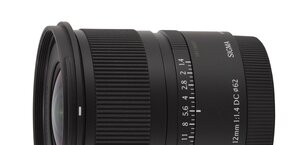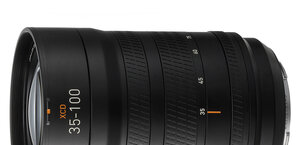Sigma C 18-300 mm f/3.5-6.3 DC MACRO OS HSM
4. Image resolution
Let’s check how the tested Sigma compares here in the frame centre – the graph below shows appropriate results at 18, 50, 100, 200 and 300 mm.

Please Support UsIf you enjoy our reviews and articles, and you want us to continue our work please, support our website by donating through PayPal. The funds are going to be used for paying our editorial team, renting servers, and equipping our testing studio; only that way we will be able to continue providing you interesting content for free. |
- - - - - - - - - - - - - - - - - - - - - - - - - - - - - - - - - - - - - - - - - - - - - - - -
Distinct differences between particular focal lengths stick out at once as they can amount to even about 10 lpmm. The lens fares the best at wide angle and its performance is the weakest at 200-300 mm; still there are no real slip-ups here. At the maximum relative aperture the MTFs reach at least 40 lpmm at every focal length so there are no problems concerning lack of sharpness. On stopping down the aperture by about 1 EV makes the lens fare even better – at 18 mm the MTFs can exceed 50 lpmm. None of the Nikkors 18-300 mm VR managed such a feat although the newest one presented a much more even performance than the Sigma and fared a bit better at the longer end.
The Tamron 16–300 mm was tested on the sensor of the Canon 50D which provides a bit higher MTFs than those from the Nikon D7000 so if you want to compare directly their performances you have to add about 3 lpmm to the results of the Tamron. After taking into account also the margin of error the results of both lenses are very similar, with differences reaching most often 1-2 lpmm. However, more often than not it’s the Sigma which seems to be better.
Now let’s check the performance on the edge of the frame – a graph, shown below, will make it easier to assess it.

Very serious reservations you can have in the 200-300 mm range; even on stopping down the aperture the MTFs still cannot exceed 30 lpmm so a sharp image is simply out of question. Good results can only be seen at 50 mm where the image is of decent quality even at the maximum relative aperture. The results at 18 mm and 100 mm are no longer as weak as those at the longer end but they don’t impress either – even on stopping down the aperture there is still a problem with reaching the decency level.
When it comes to the edge of the frame it seems the Tamron 16-300 mm has a slight advantage over the Sigma but it must be said none of the 18-300 mm megazooms managed to impress us in this category. For example the newer Nikkor didn’t exceed 31 lpmm at any combination of focal length and aperture. If you plan to use such lenses you simply have to accept fuzzy images on the edge of the frame.
Traditionally we end this chapter with crops taken from photos of our test scene in the frame centre. It’s worth reminding here that these are JPEG files saved along RAW files we used for the analysis above.
| D7000, JPEG, 18 mm, f/8.0 |
 |
| D7000, JPEG, 300 mm, f/6.3 |
 |






